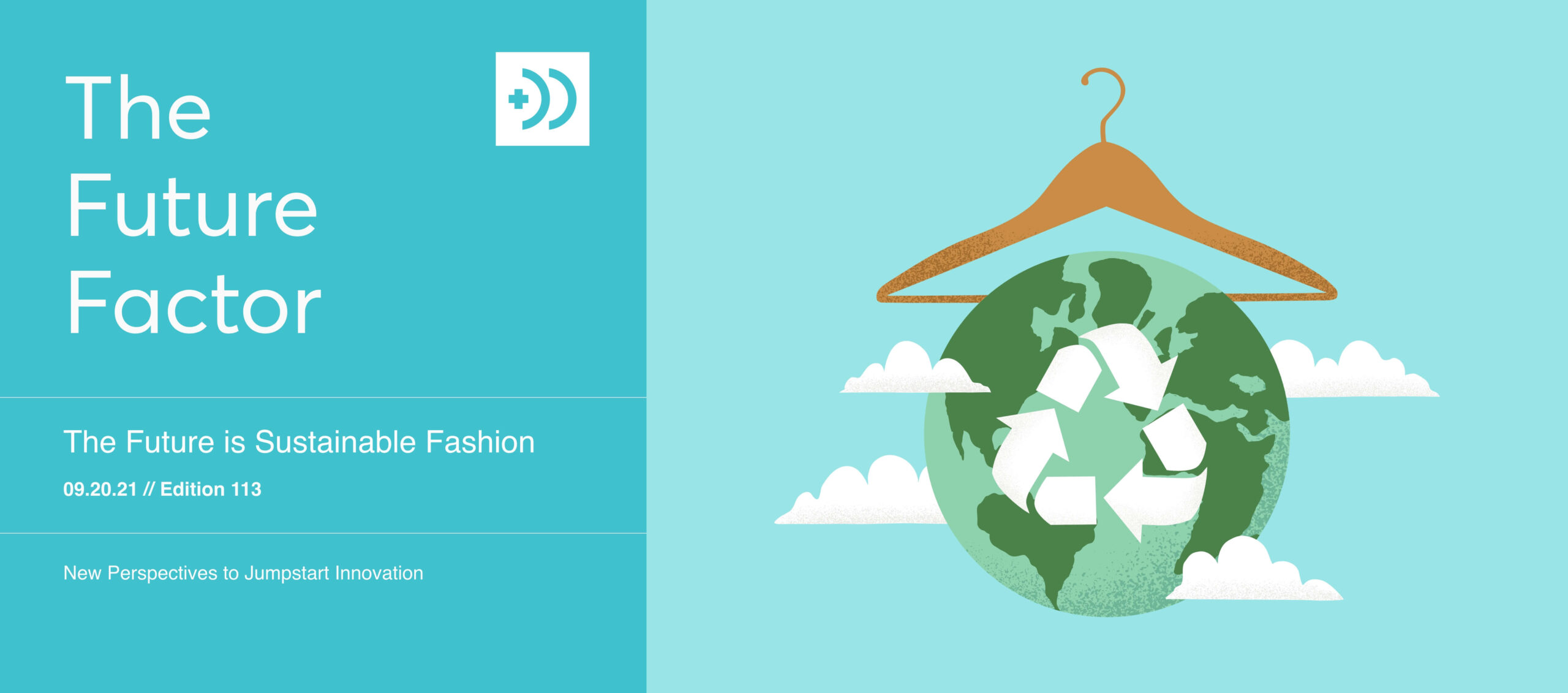The Future Is… Sustainable Fashion
The fashion industry is taking bold, positive steps to counteract its negative effects on the environment. The industry cranks out 100 billion garments annually, creating up to 10% of global greenhouse-gas emissions and siphoning off 93 billion cubic meters of water — the equivalent to 37 million Olympic-size swimming pools. Style-related searches containing sustainability keywords increased 75% year over year, according to Lyst.
What we wear is undergoing a major eco makeover. This week, we focus on the upside of this style shake-up.
NOW: Farm to Fashion
What’s Fresh: Given the toxic environmental load of fashion, established brands and category disruptors are seeking new, lower-impact materials that often play a role in the food chain. Adidas launched its iconic Stan Smith shoes made with Mylo, a mycelium-based alternative; Orange Fiber uses citrus by-products to make fibers for fashion; Piñatex does the same with pineapples—and has even been featured in Vogue.
How it Changes the Game: More industries will examine how to use natural, less waste-intensive materials and processes for their products, with food crops taking center stage.
3 Action Steps for Brands:
- Consider what food crops could fuel your supply chain.
- Communicate to consumers how you are using our planet’s bounty to minimize environmental impacts.
- Explore mushroom- or mycelium-based materials in particular—they are being used for everything from dresses to dwellings.
NOW: Zero Waste Fashion
What’s Fresh: Fashion is going full circle: Stella McCartney regenerates all leftover materials and is sourcing textile waste for future collections. Iceland’s Valdis Steinars has crafted futuristic garments from a flexible gel that can be reliquefied and reused; and Balenciaga has collaborated with designer Shahar Livne this season to offer jewelry sculpted from plastic retrieved from the ocean.
How It Changes the Game: Zero-waste fashion will become the future cool factor for brands and inspire consumers to advocate around its positive eco impact.
3 Action Steps for Brands:
- Explore how you can minimize manufacturing waste, reusing excess material in innovative ways.
- The volume of clothing Americans throw away each year has doubled in the last 20 years, from 7 million to 14 million tons. Create reuse brand programs for these garments.
- Look to the sea as your next frontier for product development.
NEXT: Metaverse Fashion
What’s Emerging: As our lives shift into the metaverse, we don’t need tangible garments—just imagery for our avatars to wear on social media and in virtual realms. DressX, for instance, is a marketplace for digital garments: Think of them as high-fashion filters. The Dematerialised is in beta with “augmented-reality product views and direct-to-avatar dressing functionality.” Elsewhere, in the hyper-popular Animal Crossing, designers Valentino, Marc Jacobs, and Anna Sui all released in-game outfits.
How It Creates the Future: With Meta Fashion, there’s zero need for fabrics, water, dyes, or other eco no-no’s. This is all about producing less—but still providing the consumer with bragging rights for drip.
3 Things to Prepare for:
- Get ready for “direct-to-avatar” products and messaging..
- Expect VR realms to present a big opportunity for the fashion industry, from creation and runway shows to selling. The VR market will grow to $21 billion by 2025.
- Both holographic professional summits and VR raves will be part of people’s experience.
The Future of Health and Happiness Report
Download our annual guide to how health and wellbeing are transforming culture and business.




